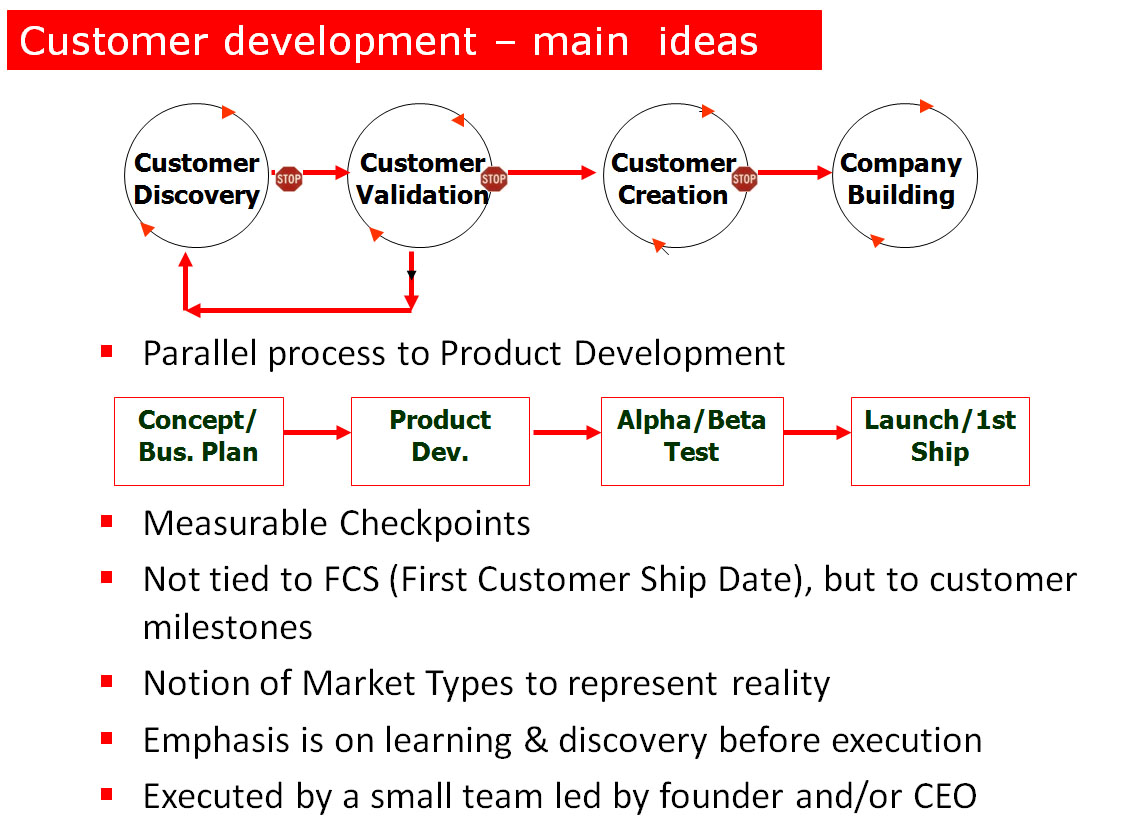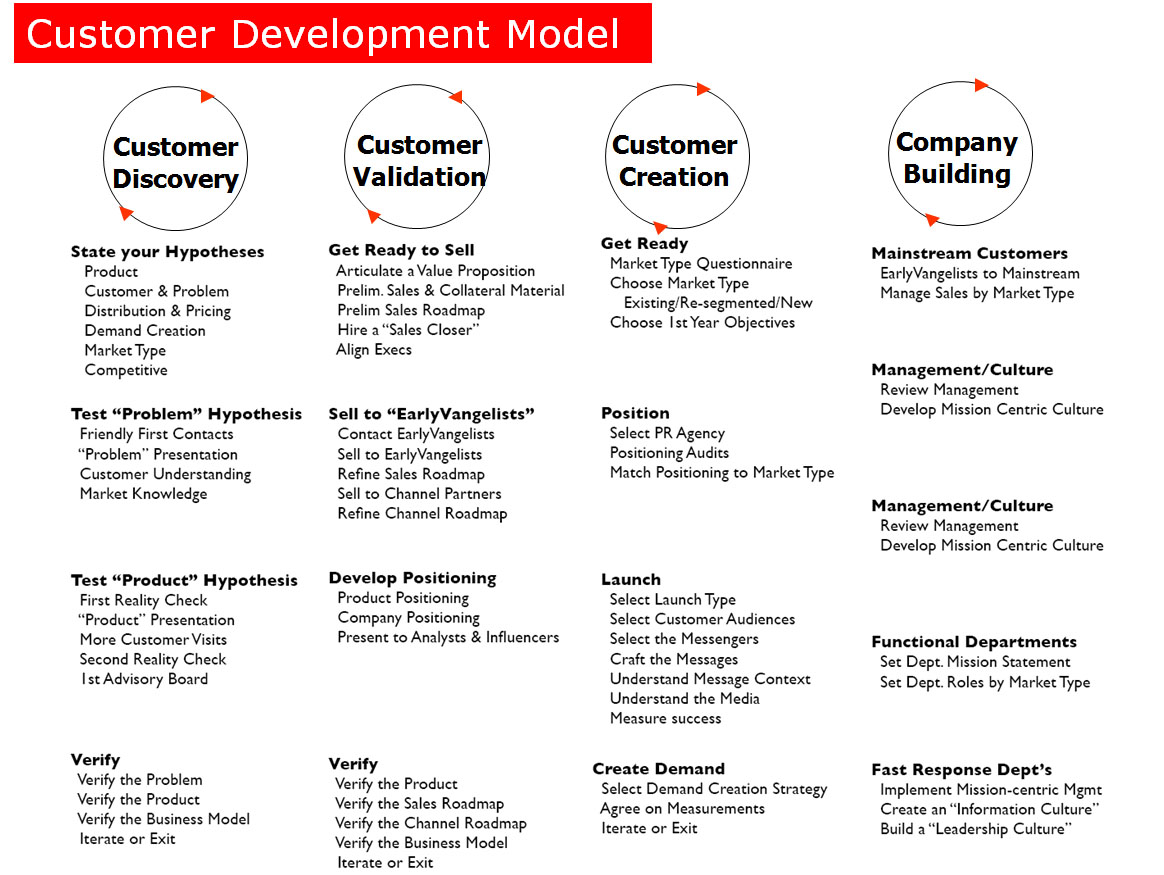Although I had mentioned him in previous posts such as The Art of Selling and his Views on Entrepreneurship, I had never read Steve Blank’s until now. I just finished reading The Four Steps to the Epiphany and I must just say it is a great book.
I will explain into some details his theory but the main reason I love this book is how he explains why founders are critical in all the decisions of the early phases of a start-up. Not the usual “hire business people”, but “learn and become an expert until you reach your limits”. I should immediately add that it is not an easy book to read and certainly mostly useful to people in the process of launching a start-up or developing new products. His web site steveblank.com is also very informative, you will find tons of slides of his teachings on the web and I particularly recommend the list of books he suggests reading.
Steve Blank is famous worldwide (mea culpa for not mentioning him more before) for his theory on the Customer Developement. Whereas we all know that the high-tech world is not about technology (no it’s not; ideas and technologies are far from sufficient to explain this world), we have a tendency to focus on products (much more important than technologies) and markets (business vs. technology). But Steve Blank explains how products can be an illusion (if never sold to customers) and how markets can be extremely dangerous if not well understood; whereas what counts are the users of products, the people which make markets, i.e. the customers. He explains how important it is to interact with potential customers in an iterative manner (bottom-up) even before designing and developing the product, then while developing them and be careful about a top-bottom-only analysis of the markets.
This is one of his famous slides where he explains that Product Development in isolation is deathly and should be done in parallel with Customer Developement only. Start-ups do not need teams in Marketing, Sales or Business Development, but only two teams, in Product Development and Customer Development, each headed by one of the Founder(s)/CEO. Below is another detailed description of this process (also available online). Then when they become large, they can switch to the traditional models.
You should absolutely read this if you are in a start-up mode. This may help you avoid many (possibly deathly) mistakes.




